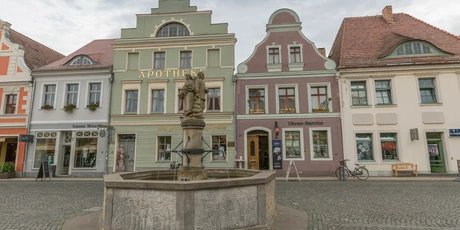
Spreewald Biosphere Reserve (Biosphärenreservat Spreewald)
Like a quaint Venice in the middle of the forest
Although the Spreewald may be less known to foreigners, Berliners think of linseed oil, Sorbian costumes with sumptuous headdresses, and delicious pickles when someone mentions this region to the south of Berlin. The Spreewald is also home to fire-bellied toads, frogs, snipes, and otters. This may be due to the fact that the largely natural landscape of the Spreewald with its wetlands, streams, forests, and moors is hospitable to many plant and animal species not seen elsewhere.
Species and cultural protection in one
Conservationists in the former GDR had begun trying to protect the Spreewald in the 1980s, which culminated in the recognition of the region by UNESCO in 1991. Since then, the Spreewald Forest has been protected as a biosphere reserve covering 475 km² (184 sq. mi.). The reserve’s tasks include not only the conservation of species such as otters and white storks, but also the preservation of the historic, small-scale cultural landscape and traditional skills.
Having fun in this special region
At the same time, the Spreewald offers lots of fun things to do. If you would like to explore the many aspects of the Spreewald biosphere reserve, you can opt for a boat trip or a cycling tour along the “Pickles Cycling Trail”. Hiking enthusiasts will also enjoy the Spreewald. The Lehde Open-Air Musuem and the Museum of Agrarian History in Schlepzig are good choices for excursions, too.
Archaeological finds in the Spreewald
In the protected cultural landscape of the biosphere reserve, evidence of a Bronze Age civilisation has been found. Berlin physician and anthropologist Rudolph Virchow was particularly enthusiastic about these findings. In the town of Burg, two religious carts made of bronze dating from the time between 2300 and 800 BCE were found in the late 19th century. At Raddusch Castle, thepermanent exhibition “Archaeology in Lower Lusatia”, you can marvel at a replica of one of these carts as well as additional artefacts from the Bronze Age.
